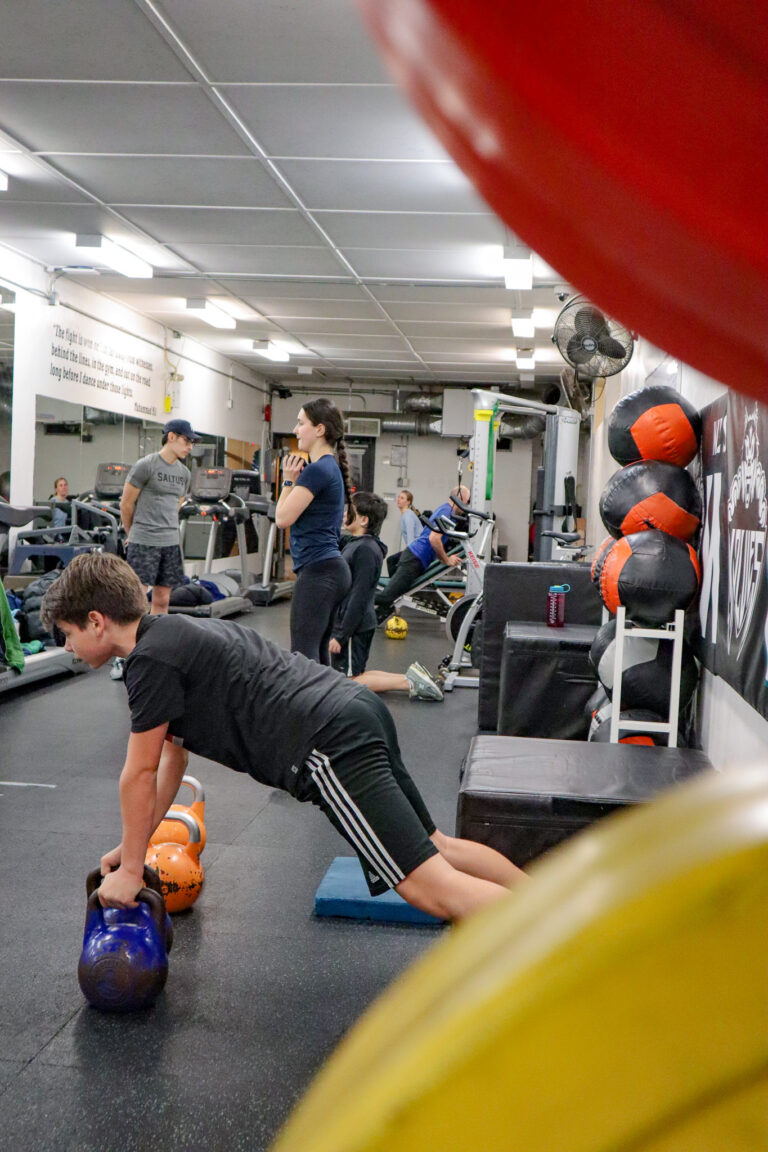As an athlete, you’ve probably heard that strength training is important for your performance and injury prevention. But what should you do during your competitive season? Should you keep pushing yourself to make gains or take a step back to avoid overtraining? In this blog, we’ll discuss what an in-season program should look like and provide some guidelines for the optimal sets, reps, intensity, and recovery periods.
Focus On Maintenance, Not Gains

During the season, the physical and mental stress placed upon your body and mind from competition is incredibly high. Depending on the sport, the level you play and access to different recovery strategies, how long it takes for you to fully recover may range from a day or two to a week or so. This then impacts your training directly after competition and what you can get done before the next comp. Because of this, your primary goal in season should be to maintain the gains you made during the off-season.
Maintaining strength and power gains from the off season means you won’t be lifting as heavy or doing as much volume as you were before. Instead, you’ll be doing just enough to maintain your strength and fitness, without overtaxing your body and prepare for the next competition.
Optimal Sets And Reps
The optimal sets and reps for an in-season program will vary depending on the athlete and the sport. Research within elite level powerlifters suggest 3-5 sets of 3-5 reps spread throughout the week for squat, deadlift and bench) was enough of a stimulus to maintain strength, without causing excessive fatigue.
Intensity
Intensity is the amount of weight you’re lifting relative to your one-rep max (1RM). During the season, you’ll want to lift at a lower intensity than you were during the off-season. A good starting point is to lift at around 75-85% of your 1RM for strength exercises. This will be enough to maintain your strength, without overtaxing your nervous system. At some points of the season it maybe beneficial to increase the load to above 85% and decrease the reps to 1-2 reps.
Recovery Periods

Recovery is crucial during the season, as you’ll be playing games and practicing regularly. You’ll want to make sure you’re getting enough rest between workouts to allow your body to recover and adapt. A good starting point is to take 1-2 days off per week, with sufficient sleep (7-9 hours per night), a balanced diet consuming the key macronutrients and recovery focused sessions such as stretching. Once you’re on point with sleep, rest days and nutrition, then begin to introduce more advanced recovery techniques such as massage, normatec and massage guns.
Incorporate Mobility & Injury Prevention
In-season training should also include mobility and injury prevention work. This can include foam rolling, stretching, and specific exercises to address common areas of tightness and weakness. This will help you maintain your mobility and reduce the risk of injury.
Finally, listening to your body and adjusting your program as needed is important. For example, if you are feeling fatigued or experiencing pain or discomfort, it’s important to take a break or adjust your program accordingly.
In summary, an in-season program should focus on maintaining the gains you made during the off-season, without overtaxing your body. This means doing fewer sets and reps, lifting at a lower intensity, and allowing for adequate recovery. Incorporating mobility and injury prevention work is important to keep your body healthy and injury-free. By following these guidelines, you’ll be able to maintain your strength and fitness throughout the season and perform at your best when it counts. If you are looking for assistance in your training regime contact us.
